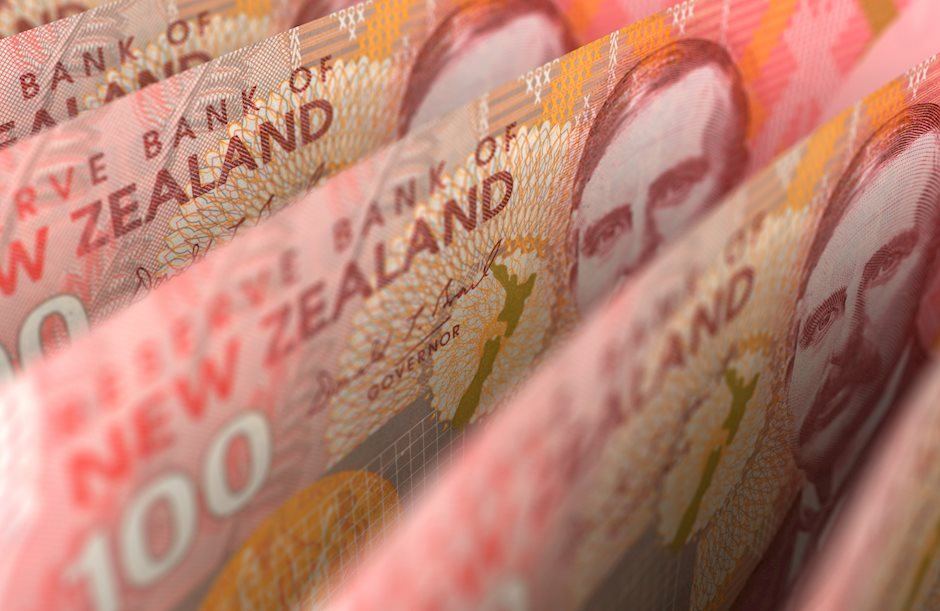NZD/USD posts fresh 11-week low below 0.5950 as US Dollar bounces back
- NZD/USD prints a fresh over 11-week low below 0.5950 as the US Dollar rebounds.
- The US Dollar bounces back in the aftermath of the lower US Initial Jobless Claims data.
- Investors expect the RBNZ to cut interest rates further this year by 50 bps to 4.25%.

The NZD/USD pair refreshes a more than 11-week low slightly below 0.5950 in North American trading hours on Thursday. The Kiwi pair weakens as the US Dollar (USD) bounces back after the release of the United States (US) Initial Jobless Claims data for the week ending October 25. The initial reaction from the US Dollar was bearish after the data release, however, it recovers quickly as claims came in surprisingly lower than expected.
The US Dollar Index (DXY), which tracks the Greenback’s value against ix major currencies, rebounds from the day’s low of 103.80 and turns flat, at the time of writing.
Individuals claiming jobless benefits for the first time were lower at 216K against estimates of 230K and the former reading of 228K. This has diminished fears of labor demand slowing in the near term. On Wednesday, unexpectedly upbeat ADP Employment Change data also pointed to an improvement in the job market. The agency reported that 233K workers were hired by the private sector in October, significantly higher than 159K in September.
For more cues on the current labor market health, investors will focus on the US Nonfarm Payrolls (NFP) data for October, which will be published on Friday.
Meanwhile, the New Zealand Dollar (NZD) remains under pressure on expectations that the Reserve Bank of New Zealand (RBNZ) will cut interest rates gain by a larger-than-usual size of 50 basis points (bps) in its monetary policy meeting on November 27. This would push the Official Cash Rate (OCR) lower to 4.25%.
Economic Indicator
Initial Jobless Claims
The Initial Jobless Claims released by the US Department of Labor is a measure of the number of people filing first-time claims for state unemployment insurance. A larger-than-expected number indicates weakness in the US labor market, reflects negatively on the US economy, and is negative for the US Dollar (USD). On the other hand, a decreasing number should be taken as bullish for the USD.
Read more.Last release: Thu Oct 31, 2024 12:30
Frequency: Weekly
Actual: 216K
Consensus: 230K
Previous: 227K
Source: US Department of Labor
Every Thursday, the US Department of Labor publishes the number of previous week’s initial claims for unemployment benefits in the US. Since this reading could be highly volatile, investors may pay closer attention to the four-week average. A downtrend is seen as a sign of an improving labour market and could have a positive impact on the USD’s performance against its rivals and vice versa.
Author

Sagar Dua
FXStreet
Sagar Dua is associated with the financial markets from his college days. Along with pursuing post-graduation in Commerce in 2014, he started his markets training with chart analysis.

















